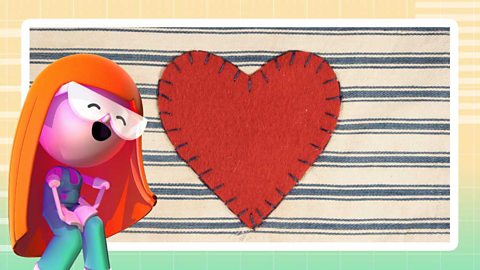Joining fabrics together
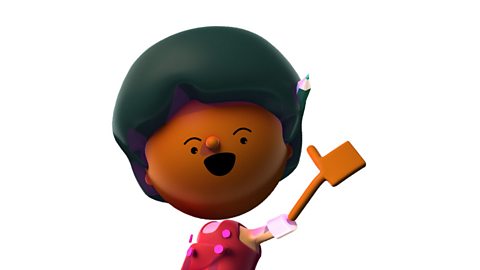
When a product is made from fabric, it is often made by joining different pieces of fabric together.
There are lots of different ways to do this. For example:
- gluing
- sewing
- tying
- pinning

Video: How to join fabrics together
Learn more about the different ways fabric can be joined together. Can you spot the different types of joins?
Mia: Hello I'm Mia. I'm in my studio with Ezra and Nevaeh and we are looking at different ways to join fabric together. What have we got?
Ezra: Thread, pins.
Nevaeh: Laces! That's how my shoes are joined!
Mia: You can even join fabric together with a special fabric stapler.
Nevaeh: I don't think I'd like to wear clothes with spiky staples.
Mia: Me neither! Staples, pins, or laces, like the ones in your shoes, create a temporary join. That means a join that is only designed to last for a short time or that is not very strong. A permanent join on the other hand is strong and long-lasting, made with stitches or fabric glue. Let's have a look at some joins. This pencil case has been glued.
Ezra: It feels strong. It must be a permanent join.
Nevaeh: The laces in my shoes are temporarily joined so I can take them off.
Mia: That's right! Why else might we only want a temporary join?
Ezra: In case you need to fix something quickly?
Nevaeh: If you're making something, you can see what it looks like first.
Mia: Well, it's funny you should mention that. I've been trying to give this old shirt a new look, but I'm still deciding where all the shapes should go. So I've used temporary joins - can you see them?
Ezra: This stapled join doesn't feel very strong.
Nevaeh: There's big gaps between these safety pins, it can be taken apart easily.
Mia: A temporary join can also be used as a guide for sewing. I'm pretty happy with the position of my shapes, so I'm going to stitch permanent joins now.
I'll start with the running stitch. Remember to always be careful of your fingers when using needles and point them downwards where you can because they are very sharp.
Ezra: The stitches are smaller, they feel much stronger!
Mia: Yes and I think it looks perfect! Now let's make this join permanent too. This time as we're joining the edges of fabric and we want to close the gap a little, we can use an overstitch.
We're going to start by pushing our needle through the back of the piece of fabric we're attaching to our shirt so that our knot will be hidden.
Once we bring our needle through, we'll bring it over the outside and push it down through our shirt where we want to attach it.
The thread is coming out and over like this, which is why it's called an overstitch. We want to keep the stitches close together to make it stronger.
Nevaeh: That feels strong now.
Mia: When we finish this, we'll have a lovely shirt with permanent joins ready to wear.
Permanent joins
Permanent joins are made when two pieces of fabric are joined together to form a strong bond that can’t be taken apart easily.
Permanent joins are useful when you need two pieces of material to stay together for a long time.
Clothing often has permanent joins so that the different parts of our clothes stay together. For example, you wouldn’t want the sleeve of your jumper to fall off!
Permanent joins can be made by:
- gluing
- sewing
Gluing
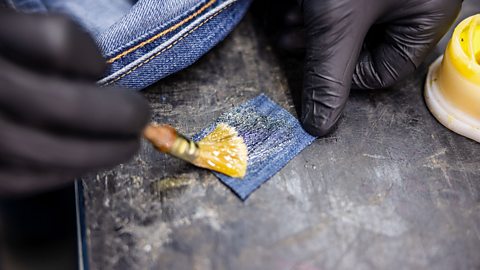
Glue is put onto the first piece of material and then it is placed onto the second piece of material.
When the glue dries, it becomes hard so that the two pieces are stuck together.
Strong glue, like fabric glue or PVA glue, is usually used for this as it creates a stronger join.
When using strong glues, always wear gloves and ask an adult to help.

Sewing
Sewing stitches with a needle and thread can create a permanent join if the stitches are small and tight enough.
Sometimes stitches are sewn by hand with a metal needle and thread. Sometimes they are sewn on a sewing machine.
Here are two types of stitches that can make a permanent join.
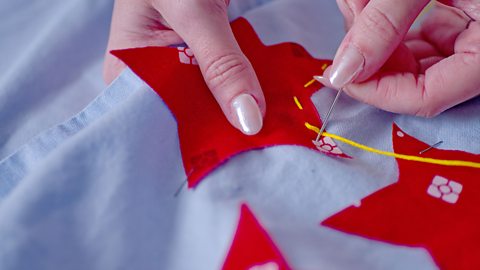
Image caption, Running stitch
A running stitch is made by using a needle and thread to sew a line of stitches that go in and out of the material. There is a small gap between each of the stitches. This stitch is useful for keeping two pieces of flat material joined together.
Image caption, Overstitch
An overstitch is a stitch where the needle and thread go over the edges of the material, from front to back, in order to keep them closed.
1 of 2

Stitch safety
When sewing, always remember these important safety tips:
Always point the needle downwards to avoid it hurting anyone.
The pointy ends of needles and pins can be sharp. Keep your fingers away from that part and always ask an adult to help.
Only use a piece of thread that is as long as the distance between your hand and elbow. This is so that you can control the needle and thread carefully.

Temporary joins
Temporary joins are only designed to last for a short amount of time. The bond in these joins is not very strong.
Temporary joins are useful when you need two or more pieces of material to stay joined together for a short while, before you undo them.
Temporary joins can be made in fabric by:
- tying
- pinning
Tying
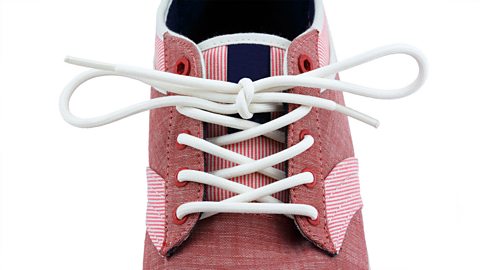
Tying pieces of fabric together creates a temporary join.
Materials can be tied together in different ways, such as bows or knots.
When the product is no longer needed, the tie can be undone, ready to use next time.
What would happen if the join on a pair of shoes was not temporary?

Pinning

Materials are often pinned in order to hold them in place before they are sewn together.
Pins don’t hold the material together tightly, but they do help it to stay in place before it is sewn.
Some pins have a bobble on the end that stops them from going all the way through the fabric.
Other pins, like safety pins, have a clasp which can be closed so that they don’t fall out of the material.
All pins have a sharp point at the end, so be careful of your fingers and ask an adult for help when pinning materials together.

Quiz: Permanent or temporary joins?
Can you tell the difference between a permanent join and a temporary join? Have a go at this quiz to find out.
More on Textiles
Find out more by working through a topic
- count2 of 4
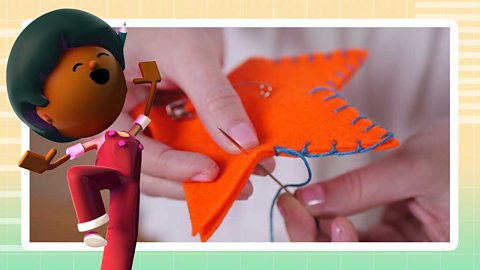
- count3 of 4
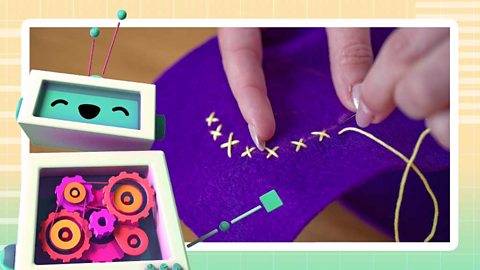
- count4 of 4
